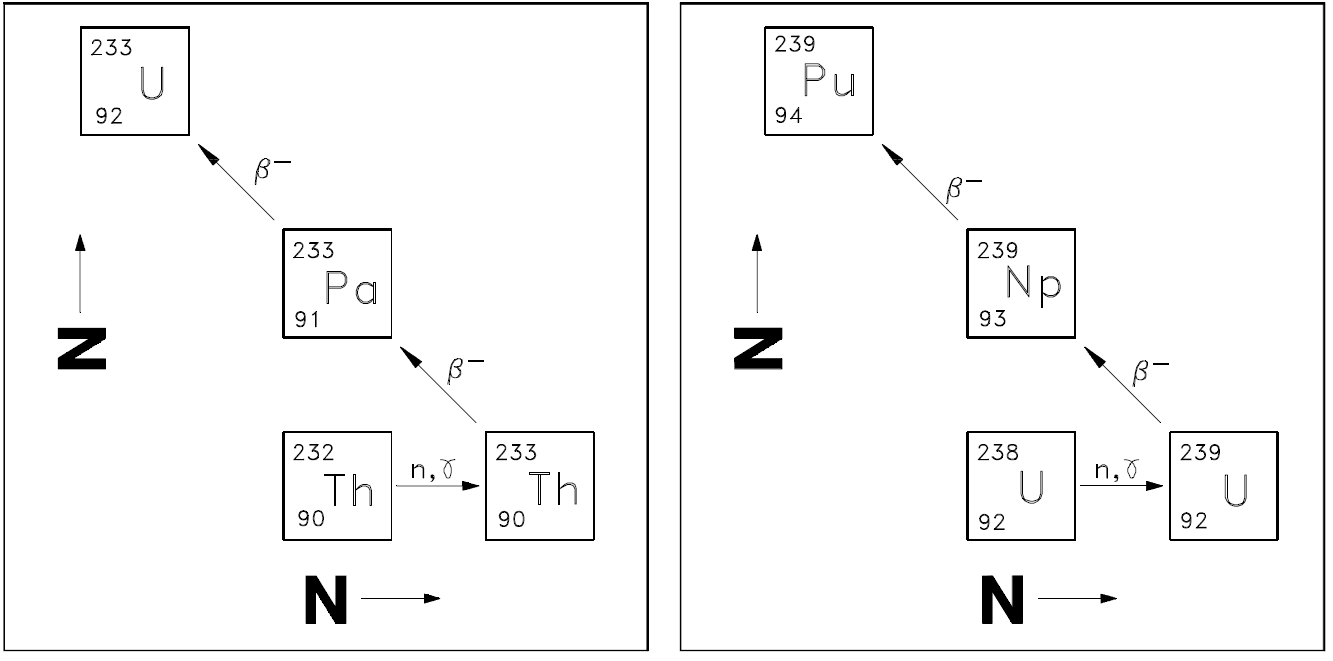
Fertile Material
 المؤلف:
U.S. Department of Commerce, National Technical Information Service, 1993
المؤلف:
U.S. Department of Commerce, National Technical Information Service, 1993
 المصدر:
The Nuclear Physics and Reactor Theory Handbook
المصدر:
The Nuclear Physics and Reactor Theory Handbook
 الجزء والصفحة:
p 52
الجزء والصفحة:
p 52
 30-3-2017
30-3-2017
 2933
2933
Fertile Material
All of the neutron absorption reactions that do not result in fission lead to the production of new nuclides through the process known as transmutation. These nuclides can, in turn, be transmuted again or may undergo radioactive decay to produce still different nuclides. The nuclides that are produced by this process are referred to as transmutation products. Because several of the fissile nuclides do not exist in nature, they can only be produced by nuclear reactions (transmutation). The target nuclei for such reactions are said to be fertile. Fertile materials are materials that can undergo transmutation to become fissile materials. Figure 19 traces the transmutation mechanism by which two fertile nuclides, thorium-232 and uranium-238, produce uranium-233 and plutonium-239, respectively.

Figure 1: Conversion of Fertile Nuclides to Fissile Nuclid
If a reactor contains fertile material in addition to its fissile fuel, some new fuel will be produced as the original fuel is burned up. This is called conversion. Reactors that are specifically designed to produce fissionable fuel are called "breeder" reactors. In such reactors, the amount of fissionable fuel produced is greater than the amount of fuel burnup. If less fuel is produced than used, the process is called conversion, and the reactor is termed a "converter."
 الاكثر قراءة في مواضيع عامة في الفيزياء النووية
الاكثر قراءة في مواضيع عامة في الفيزياء النووية
 اخر الاخبار
اخر الاخبار
اخبار العتبة العباسية المقدسة


